Tubb Canyon Desert Conservancy
Biocontrol Project
The problem with Sahara mustard is that it has spread so far and so wide since its introduction into the United States in the 1920’s that it is not possible to eradicate it using the old-fashioned means of spraying herbicides or pulling it by hand. This weed now destroys deserts from California to Texas, and from Utah into central Mexico. It is so thick and widespread in some places that researchers in Arizona are using satellite photographs from space to track the invasion!
Because the invasion of Sahara mustard now covers hundreds of thousands of acres of once pristine desert land, the only possible means of eradicating it is to discover the biological agent(s)—a virus, a fungus, a bacterium, or an insect—that keeps it in check in its native habitat in the Old World. The problem is where in the Old World to look for such a biological agent. Sahara mustard’s native range extends from Morocco, across North Africa, through the Middle East, all the way to Afghanistan.
Until very recently the only way to look for a biological agent for a plant with a huge native range like Sahara mustard was to simply guess where to look and to hope you were lucky. Such an approach typically took many years and could easily cost millions of dollars. Now, modern science in the form of DNA analysis has provided us with a way to know exactly where to look for a biological control agent, and at a fraction of the cost.
Phase I of the TCDC Biocontrol Project is a genetic analysis of samples of Sahara mustard plants from all over the southwestern United States. This testing will tell us if the Sahara mustard found in the United States came from one place in the Old World or from multiple origins. This genetic analysis will be done at UCI and UCI-affiliated laboratories. TCDC has completed fundraising for Phase I and expects to complete the work of Phase I by the end of 2015.
Phase II of the TCDC Biocontrol Project is a genetic analysis of samples of Sahara mustard from throughout its native range in the Old World. US Department of Agriculture (USDA) partners stationed at the European Biological Control Laboratory in France will perform Phase II. Fundraising for Phase II is now beginning.
When Phases I and II are completed we will be able to match the genes of Sahara mustard found in the United States with a specific Sahara mustard population found somewhere in its native range in the Old World. Once this match is made, we will know exactly where “our” Sahara mustard came from. We can then send biologists to that exact location to seek the biological agent(s) (virus, fungus, bacteria, or insect) that keeps “our kind” of Sahara mustard in check.
Phase III of the TCDC Biocontrol Project consists of several years of intensive testing in quarantined laboratories of any biological agent(s) found. This testing will evaluate the effectiveness of the agent and will determine if the agent(s) pose a threat to any native or commercial species in the United States. This testing would be done by United States governmental agencies that have well-established protocols for such testing.
Anyone interested in learning more about this project can contact TCDC and request a more detailed description.
Contributions toward the project may be made online and by mail.
Donate by Mail
Download Donation Form
